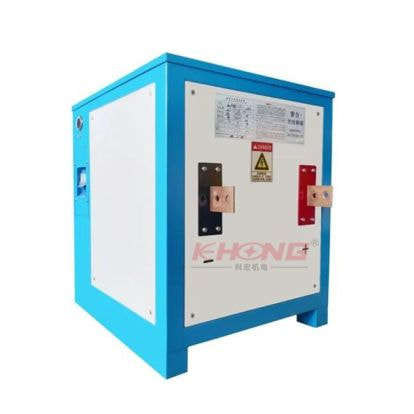FAQs | Everything You Need To Know About Electroplating
What is electroplating?
Electroplating is a process that uses electrical current to deposit a thin layer of metal onto the surface of a component. This is done to enhance the component's appearance, corrosion resistance, or mechanical properties. The process involves immersing the component (cathode) and the metal anode in an electrolyte solution and passing an electric current through the solution.

How does electroplating work?
Electroplating works by passing an electrical current through the component immersed in an electrolyte solution, leading to the deposition of a metal coating from the anode onto the component. The electrical current causes metal ions from the anode to dissolve in the electrolyte solution and plate onto the cathode.
What are the basic power requirements for electroplating?
The power requirements for electroplating vary based on several factors, including the type of metal being plated, the size and shape of the component, the electrolyte solution used, and the desired thickness of the plating. Typically, electroplating requires a direct current (DC) power source that can supply a specific voltage and current.
How is the voltage determined?
The voltage required for electroplating depends on the type of electrolyte solution and the metal being deposited. Generally, the voltage ranges from 1 to 12 volts. Lower voltages are used for plating softer metals like zinc and copper, while higher voltages are required for harder metals like nickel and chromium.
How is the current density determined?
Current density, measured in amperes per square foot (ASF) or amperes per square decimeter (ASD), is crucial for determining the quality and rate of plating. The required current density depends on the type of metal and the desired thickness of the coating. For example, zinc plating typically requires a current density of 5-15 ASF, while nickel plating may require 40-60 ASF.
What is the relationship between current density and plating thickness?
The thickness of the plating is directly proportional to the amount of current applied over time. This relationship is governed by Faraday's laws of electrolysis. By controlling the current density and the duration of plating, the desired thickness can be achieved. For instance, to deposit a thicker layer, a higher current density or a longer plating time is needed.
Liner Dampers vs. Other Dampers
How does temperature affect power requirements?
Temperature plays a significant role in electroplating, as it affects the conductivity of the electrolyte solution and the efficiency of the plating process. Higher temperatures generally increase the conductivity of the electrolyte, allowing for lower voltage requirements. However, excessively high temperatures can lead to poor plating quality and increased power consumption.
How is the electrolyte solution composition important?
The composition of the electrolyte solution impacts the power requirements and plating quality. The concentration of metal ions, pH level, and the presence of additives all influence the efficiency of the electroplating process. Properly balanced electrolyte solutions ensure optimal power consumption and high-quality plating.
What are the power supply considerations for electroplating?
Choosing the right power supply for electroplating is essential for achieving consistent and high-quality results. The power supply should provide stable and adjustable voltage and current outputs. It should also have features like overcurrent protection, voltage regulation, and ripple control to ensure a smooth and efficient plating process.
How does the size of the component affect power requirements?
The size and shape of the component being plated significantly impact the power requirements. Larger components require higher currents to ensure even plating across the entire surface. Irregularly shaped components may need specialized fixtures and tailored current densities to achieve uniform plating.
Can pulse electroplating reduce power consumption?
Pulse electroplating is a technique where the current is applied in short, controlled pulses rather than a continuous flow. This method can reduce power consumption and improve plating quality by allowing better control over the deposition process. Pulse electroplating also reduces internal stresses and enhances the adhesion of the plated layer.
Is electroplating eco-friendly?
Yes, electroplating can be eco-friendly when managed properly. By extending the lifespan of components and enabling the use of less expensive materials, electroplating reduces waste and environmental impact. Additionally, advancements in power efficiency and waste treatment have made modern electroplating processes more sustainable.
Conclusion
Understanding the power requirements for electroplating is crucial for achieving high-quality and efficient plating results. By considering factors like voltage, current density, temperature, and electrolyte composition, one can optimize the electroplating process to meet specific needs. Proper power management not only ensures excellent plating quality but also contributes to the sustainability of the process.



